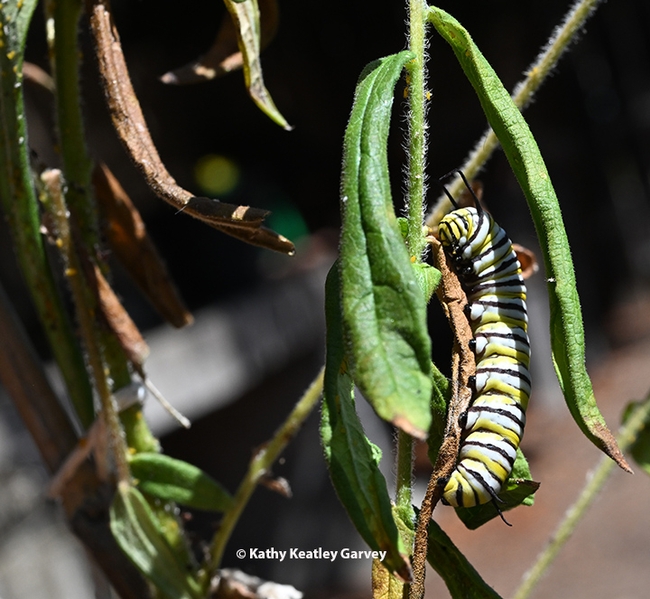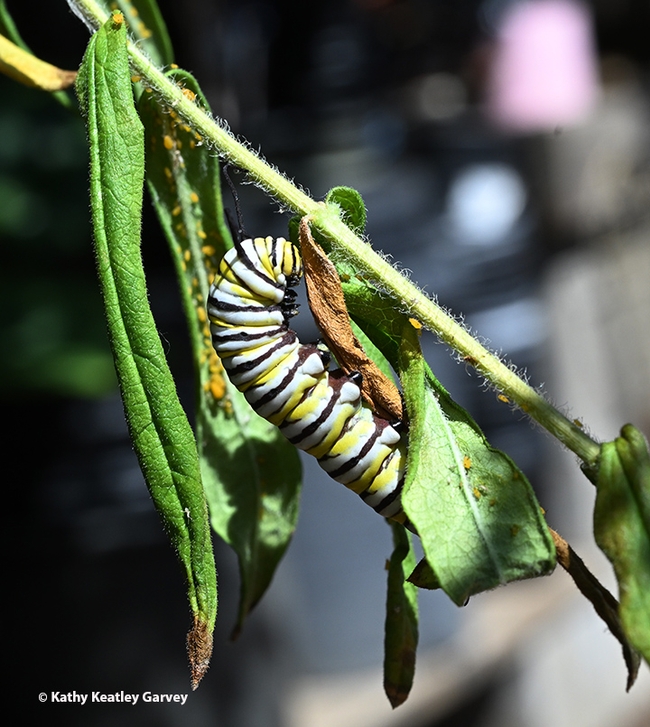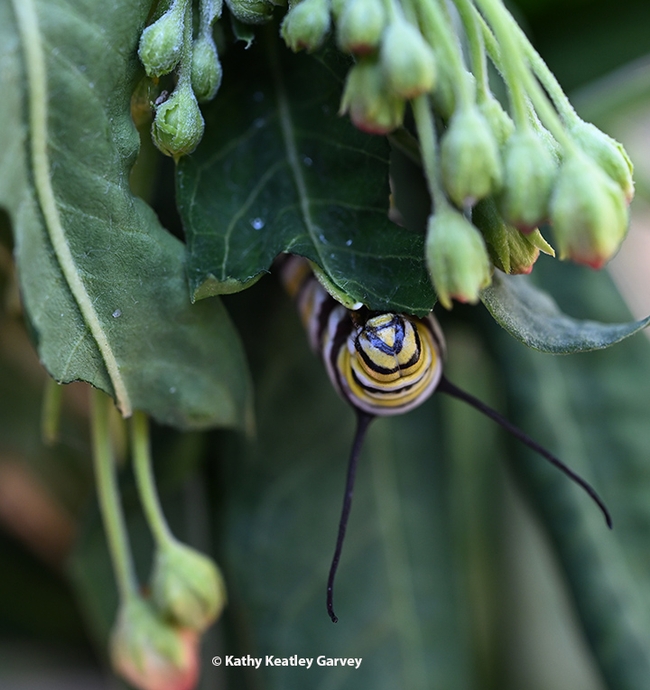Monarch butterflies seem to be as scarce as hen's teeth around here.
And since hens have no teeth, that's pretty scarce.
And then it happened.
A late in-star monarch caterpillar appeared on our milkweed in our Vacaville pollinator-predator garden on the very last day of July.
We watched it munch the wilting milkweed leaves in the triple-digit temperature.
For one day.
The next day, Aug. 1, it vanished, never to be seen again. Did it pupate? Did the California scrub jays get it?
The scrub jays nesting in our cherry laurel hedges are prime suspects. They devour everything in the garden, from honey bees, longhorned bees and dragonflies to assorted butterflies, lygus bugs and praying mantises. Happy meals. If they eat a monarch caterpillar, that makes for an unhappy meal, the vomiting kind. It's about the naturally occurring toxins (cardiac glycosides) in the milkweed that the 'cats ingest that serve as predatory protection. That's why scientists say "I bet you'll eat only one."
Just one. The one we were watching?
"Known bird predators include brown thrashers, grackles, robins, cardinals, sparrows, scrub jays and pinyon jays," Wikipedia says, but notes that "Several species of birds have acquired methods that allow them to ingest monarchs without experiencing the ill effects associated with the cardiac glycosides (cardenolides). The black-backed oriole is able to eat the monarch through an exaptation of its feeding behavior that gives it the ability to identify cardenolides by taste and reject them. The black-headed grosbeak, though, has developed an insensitivity to secondary plant poisons that allows it to ingest monarchs without vomiting. As a result, these orioles and grosbeaks periodically have high levels of cardenolides in their bodies, and they are forced to go on periods of reduced monarch consumption. This cycle effectively reduces potential predation of monarchs by 50% and indicates that monarch aposematism has a legitimate purpose. The black-headed grosbeak has also evolved resistance mutations in the molecular target of the heart poisons, the sodium pump. The specific mutations that evolved in one of the grosbeak's four copies of the sodium pump gene are the same as those found in some rodents that have also evolved to resist cardiac glycosides."
Attached Images:

A visitor! A late in-star monarch caterpillar munches on wilting milkweed in a Vacaville garden in triple-temperature conditions. (Photo by Kathy Keatley Garvey)

The monarch caterpillar keeps on munching the milkweed. (Photo by Kathy Keatley Garvey)

Close-up of a monarch caterpillar munching milkweed. (Photo by Kathy Keatley Garvey)